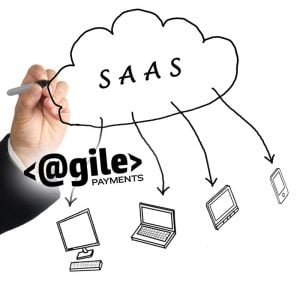SaaS is a different animal, and there is a proliferation of SaaS companies in the marketplace where many have a role in delivering SaaS. This means there will always be hurdles for any one company to overcome in providing rapid resolutions when customer issues surface.
Naturally, there will be mistakes made. However, there are certain mistakes that can, literally, destroy your SaaS. These are the ones you will want to avoid at any cost.
SaaS Pricing Mistakes
 #1. Undervaluing Your Offering.
#1. Undervaluing Your Offering.
SaaS and Web app companies have a tendency to undervalue their product and service offerings on occasion. This could be due to the fact that most SaaS and Web app companies are created by technologists. Having felt the burn of legacy software, they want to create change and undercut their competition by offering their product at an extremely low price.
The pricing mistake being made is that people are willing to pay a premium for value. If your SaaS provides the value people are looking for, they will be willing to pay a premium price. Having a low price-point, with this in mind, makes little sense.
If your SaaS provides the value people are looking for, they will be willing to pay a premium price.
 #2. Guessing.
#2. Guessing.
It may be hard to grasp, but more SaaS companies guess at their pricing structure than you can imagine. It is a natural mistake to make because many startups have virtually no time in the market. Thus, they lack an understanding of customer buying patterns and behaviors etc.
On the other hand, those SaaS companies have an advantage in being able to quickly capture information about churn. Other businesses usually require secondary systems to capture and process such data. The reality is that little time in the market is still no excuse to guess at pricing.
It is a natural to make the mistake of guessing at pricing because many startups have virtually no time in the market.
#3. Copying Another Company’s Pricing.
Never copy another company. Tie your pricing strategy into your own overall marketing strategy. It is always good to know what the competition is doing at any given moment, especially if they have been a market leader. You will always need to know your product, your market, and your own value proposition. This is where research plays an important role.
SaaS Sales Mistakes
#4. Selling to the Wrong Customers.
 Everyone is eager to close a deal, as they should be. However, this often clouds one’s judgement as to the true merits of a qualified customer. Selling to the wrong customer in SaaS can kill your business. First, the feedback you get can be way off base.
Everyone is eager to close a deal, as they should be. However, this often clouds one’s judgement as to the true merits of a qualified customer. Selling to the wrong customer in SaaS can kill your business. First, the feedback you get can be way off base.
If you are paying attention to the feedback, it can result in bad choices in your future product roadmap. This can also lead to unwanted customer support issues. The wrong customers can also lower your team’s morale. Customers, the wrong ones, can also become disgruntled and share their own experiences within their social circles.
Selling to the wrong customer in SaaS can kill your business.
#5. Overpromising.
The reality is that a startup is never where it wants to be in the beginning stages. Products are constantly being improved, and there is hope the customer will stick around long enough to experience your product and discover its true value. However, the consequences of overselling your product may end up flushing your credibility down the commode.
An example would be telling your customers that a product will be released in three weeks, and four months later you are still telling them the same thing. Good customers will cancel and you will never hear from then again. Even if your product ends up being the perfect fit four months later, you will have lost much, or all, of your credibility.
#6. Letting Customers Cancel.
When customers are not engaged with your app or product, it is a sign that cancellation is not far off. If you are not in close contact with your customer, you cannot convince them to stay, or worse, you will never know why they jumped ship. You may assume they left because the product was not a good fit, but there may be other valid reasons:
- The product was actually a good fit, but there were not using it optimally.
- They cancelled because your app does not have a certain desired feature—one that you are actually working on.
- They cancelled because their champion (an employee of yours) left and no one is following up to see how they are getting along.
 SaaS Marketing Mistakes
SaaS Marketing Mistakes
#7. Oversegmentation.
It might sound good to target as many customers a possible, but it can end up being a slippery slope for your SaaS business. You should never have as many tiers as you have customers. This practice can create confusion all around, and there is a risk losing customers through churn.
#8. Providing Few Options.
Companies used to operate like castles. Some still do. Their goal is to have customers proceed in an orderly fashion through some type of designated gate and sales funnels. Companies that are service-oriented, make it a point to meet their customers in the middle of the process, or wherever their customers are. There is a universe of touchpoints to consider. Good SaaS companies manage these touchpoints very carefully.
#9. Failure to Empower the Customer.
The last thing you want is for a customer to get their knowledge and information from another customer. Educating customers is your job, not that of other clients. Your dealings with clients should give them all the information and inspiration they need to remain loyal clients and grow with your company.
Driving Sales Via Customer Satisfaction
Your overall goal will be to drive sales through customer satisfaction. Your sales team will play an important role in the process. At some point, a customer may have an issue that needs resolving. How your customer service department handles the issue will determine if that customer remains loyal or finds another provider.



